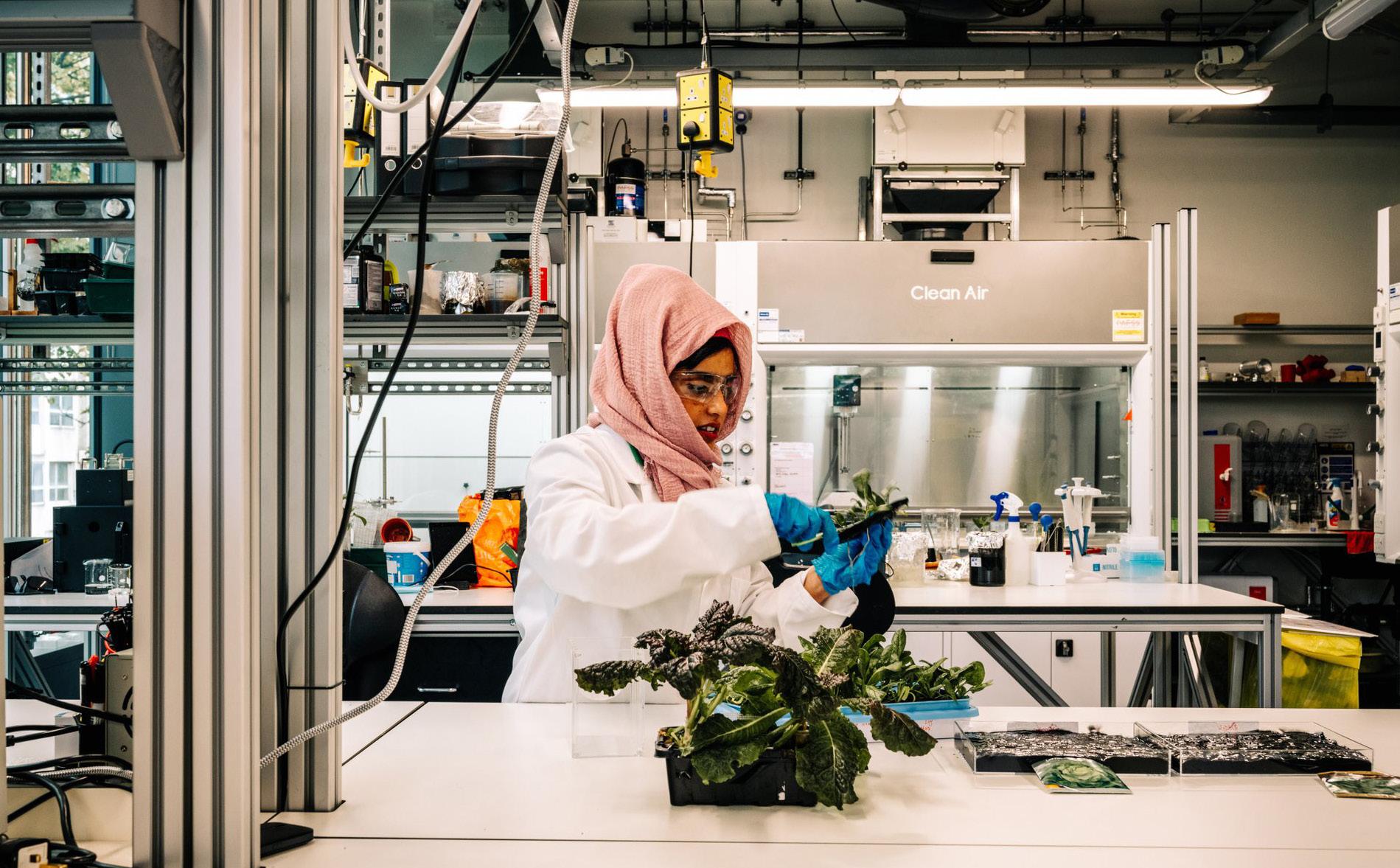Greater Manchester in 2038, as enabled by advanced materials ENERGY AND TRANSPORT FAST FACTS: Greenhouse gas emissions from the transport sector have more than doubled since 1970, with around 80% of this increase coming from road vehicles. Currently, the transport sector is almost completely dependent on fossil fuels. It contributes approximately one quarter of all energy-related carbon dioxide emissions. Source
Switching to an electric car can help improve air quality and boost green jobs — if the electricity is powered by renewables. By achieving a 60% share of battery-electric and plugin hybrid vehicles on the road, more than 60 billion tons of CO2 could be saved between now and 2050.
4
A radically different approach to local, national and international travel are key to Greater Manchester’s ambitions to achieve net carbon neutrality by 2038 and many of the solutions are already being engineered within the city region. New batteries, supercapacitors and lightweighted composites will increase the scale and range of electrified transport. Similarly, lightweighting of vehicle components is already supporting the move to more energy efficient means of transport. Used as an additive, graphene and other 2D materials can improve multiple elements of vehicles. When combined with rubber, it could potentially give a tyre both durability and grip. This could mean no more trade-offs between longevity and traction. One company, SpaceBlue - a spin-out from The Univerity of Manchester - even looks to recycle tyres after they have reached the end of their life, by converting them into hardwearing floor mats, which
have been enhanced with tiny amounts of graphene. The 2D material can also be used to form compounds with other elements of a car to make it lighter. Briggs Automotive Company, a partner in Manchester’s Graphene Engineering Innovation Centre (GEIC - the world-class advanced materials innovation accelerator), built the Mono, ‘the first production car in the world to fully incorporate the use of graphene-enhanced carbon fibre in every body panel’. The material improved the structural properties of the fibre to make the supercar’s panels stronger and lighter, while also significantly improving the car’s mechanical and thermal performance. Even outside of the car, the material could help make a difference to road users. Responsible for the UK’s motorways and major roads, Highways England is working with the GEIC to explore the addition of graphene to bitumen in road surfaces. The aim is to make roads






